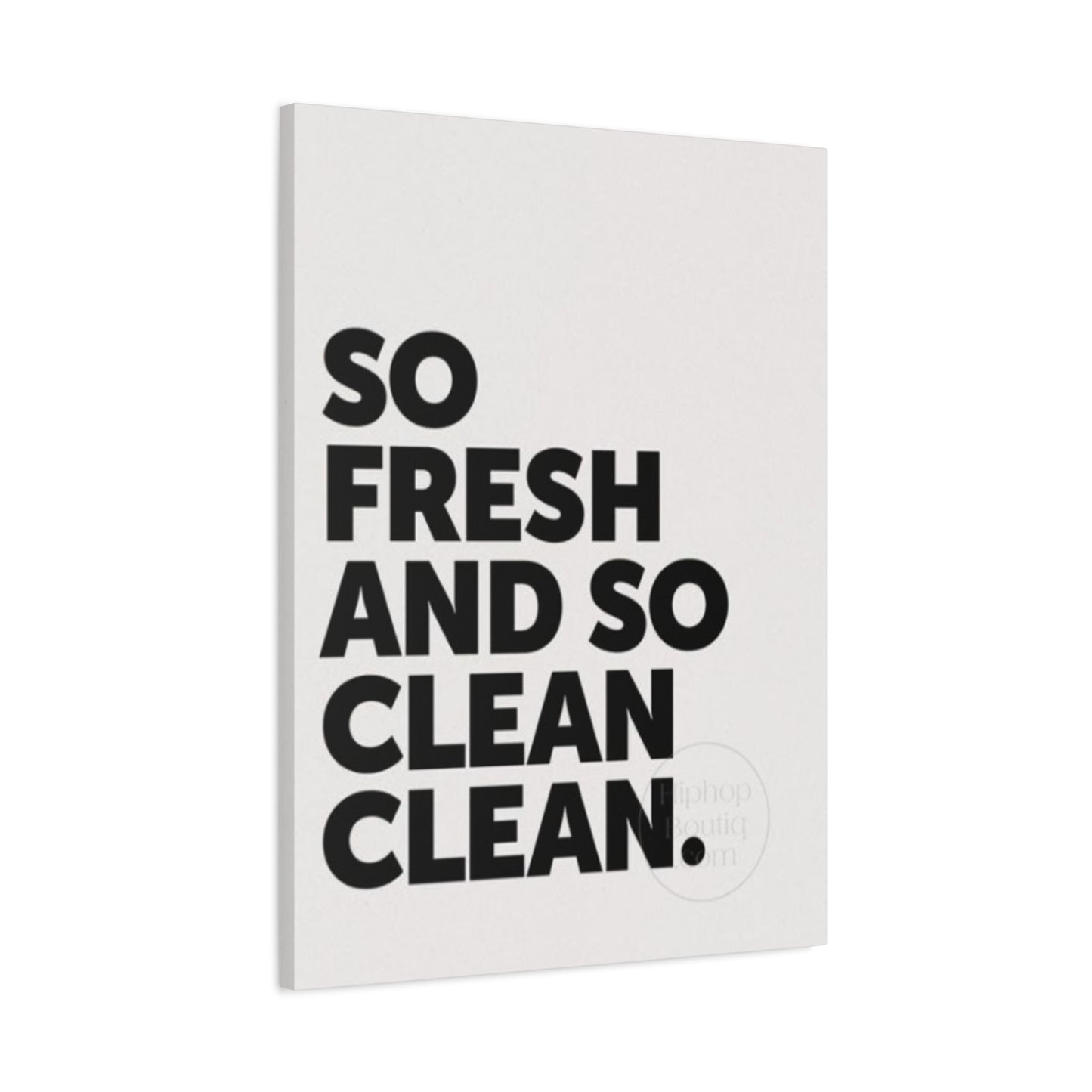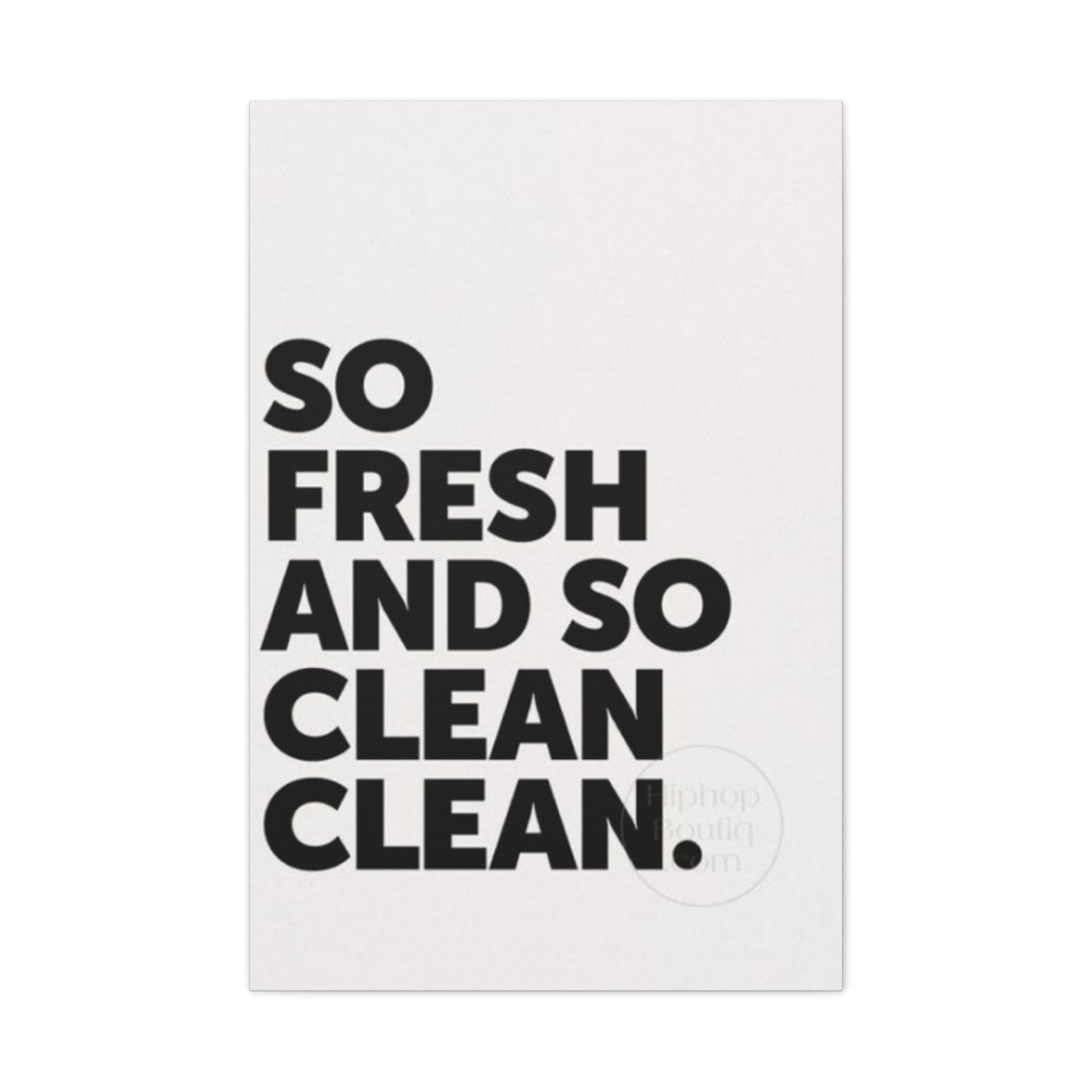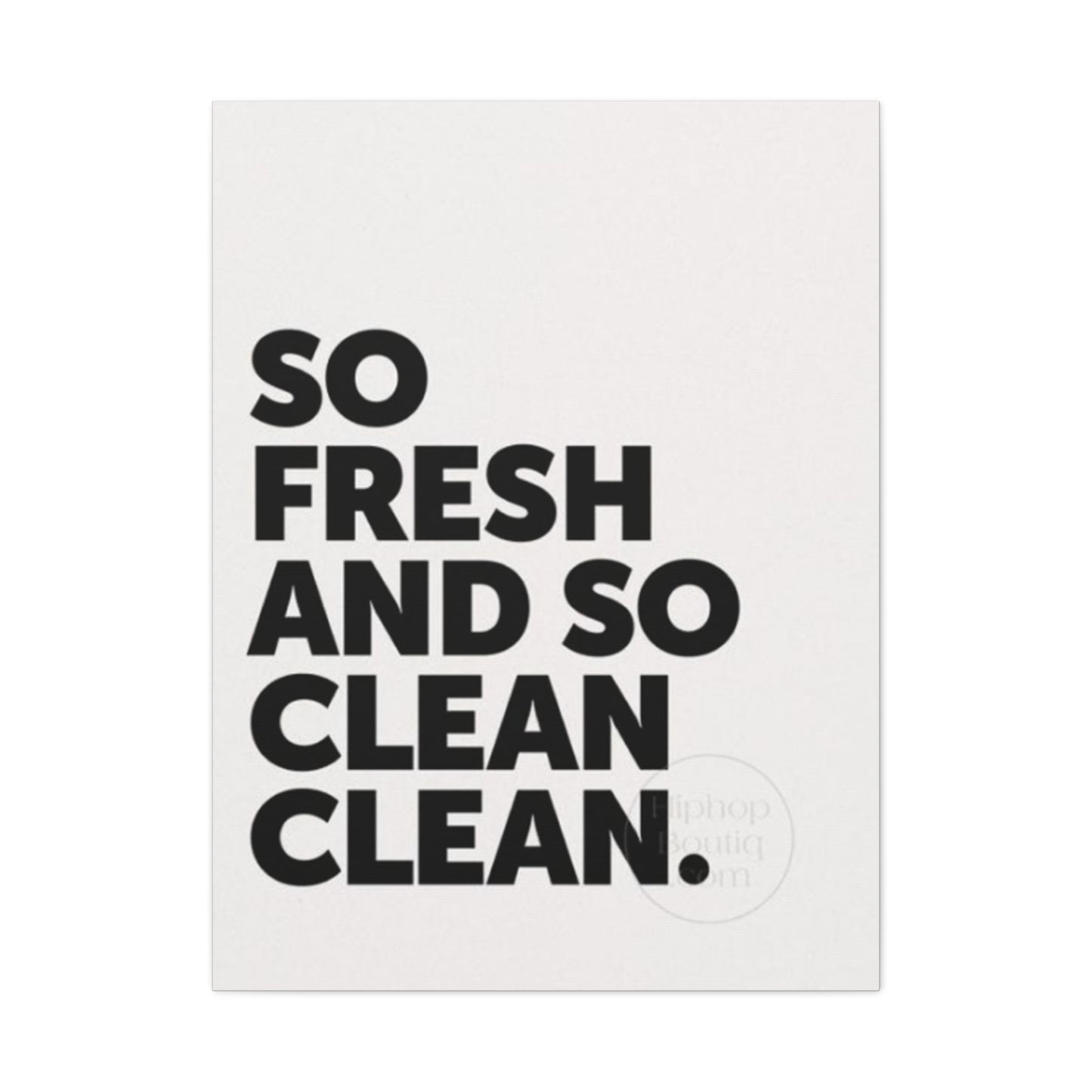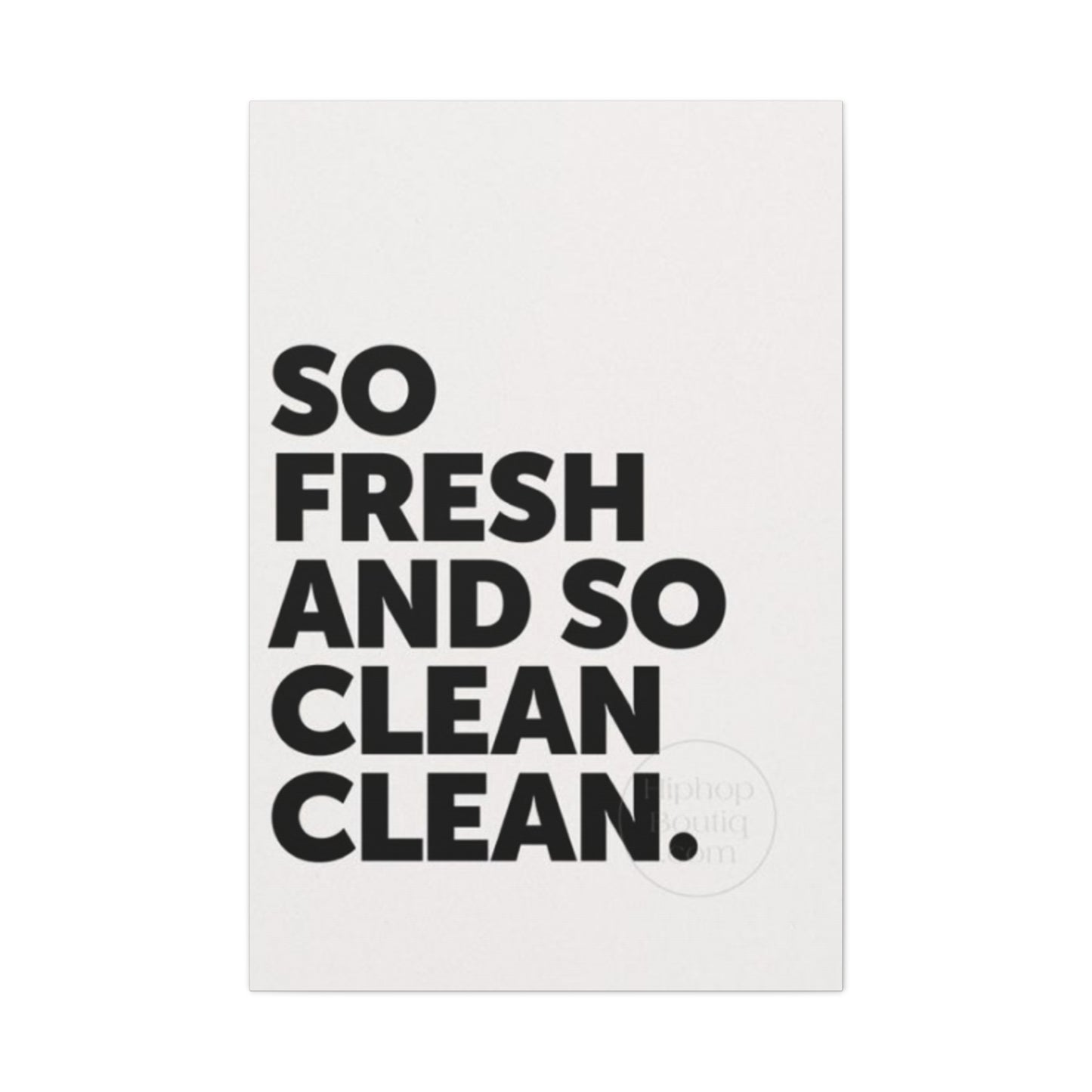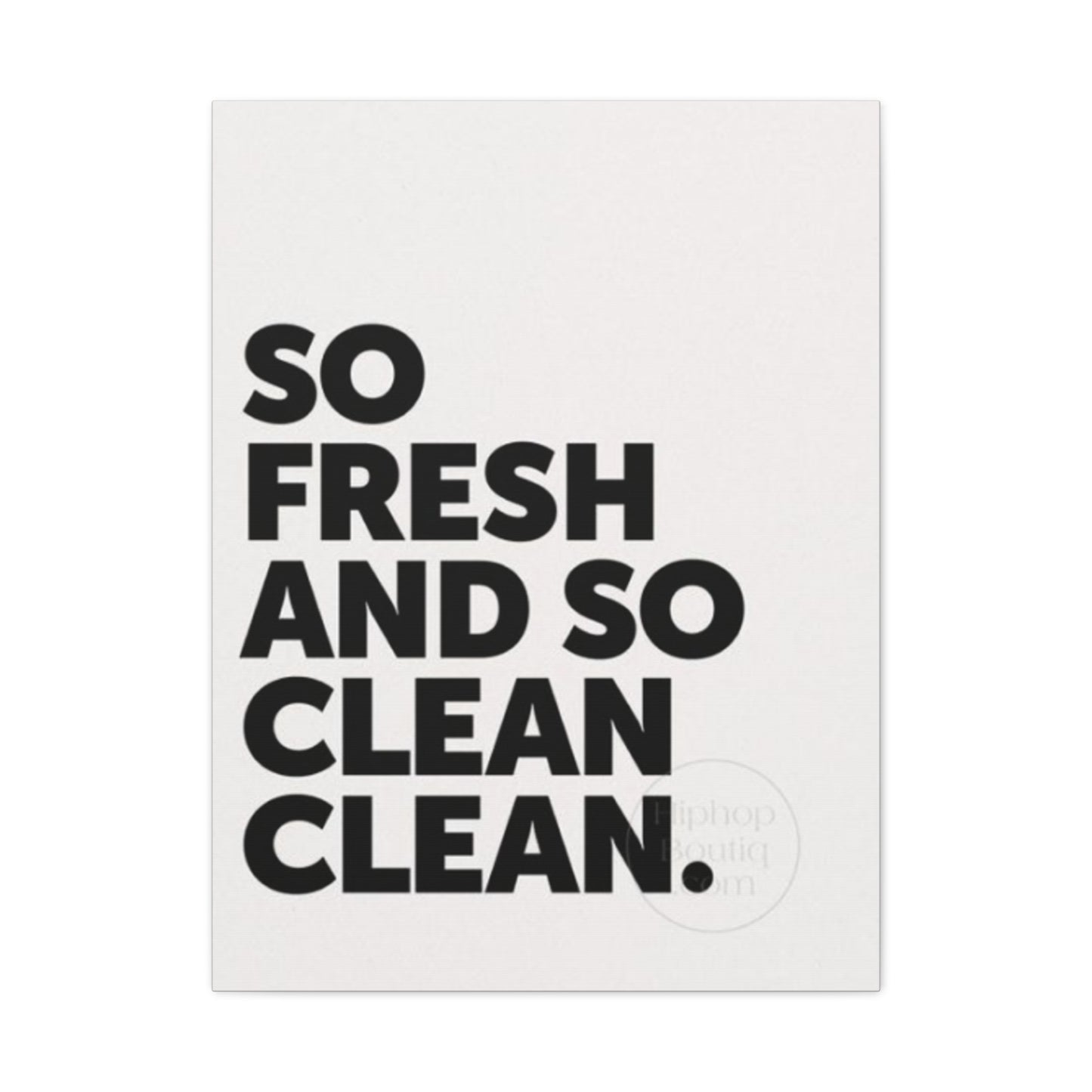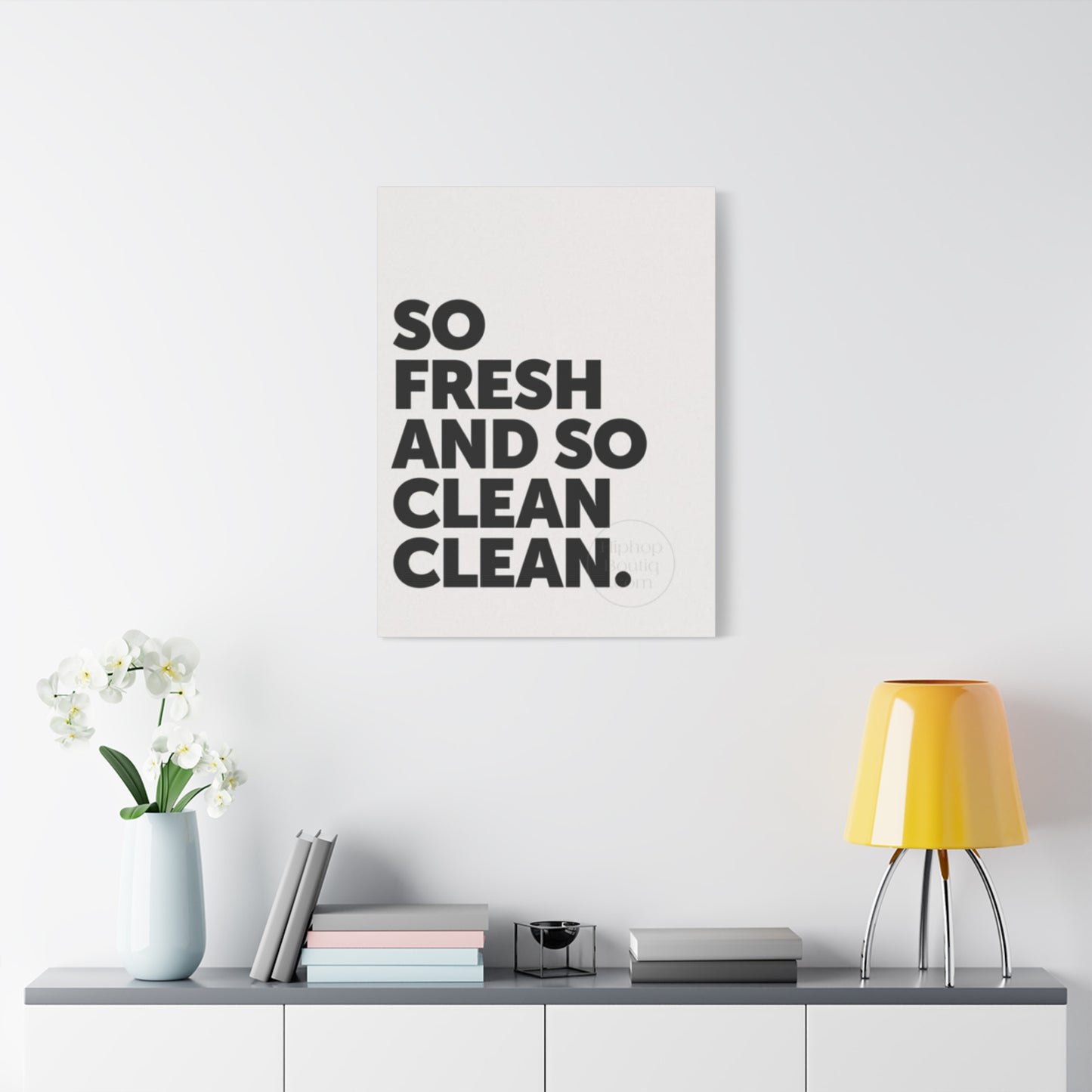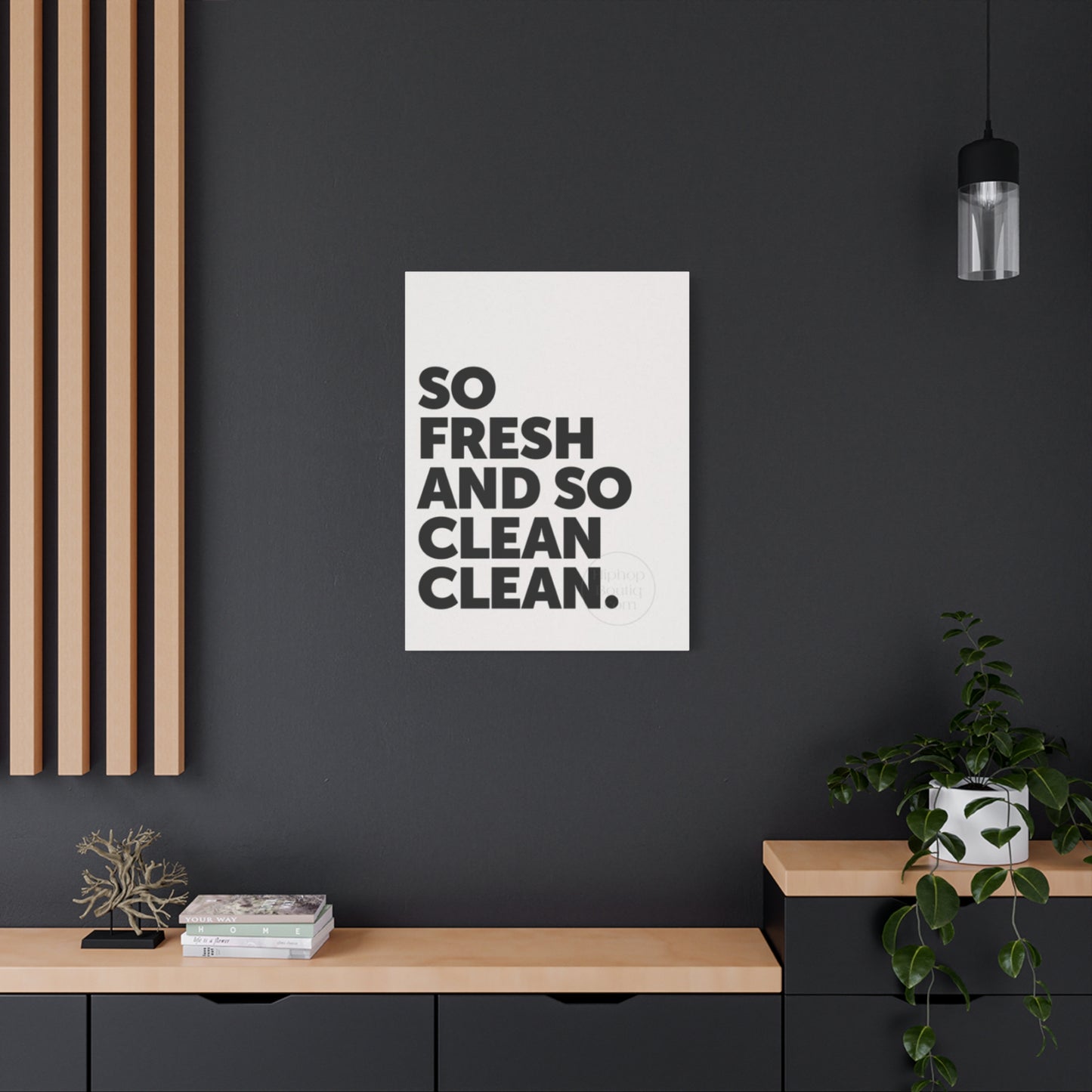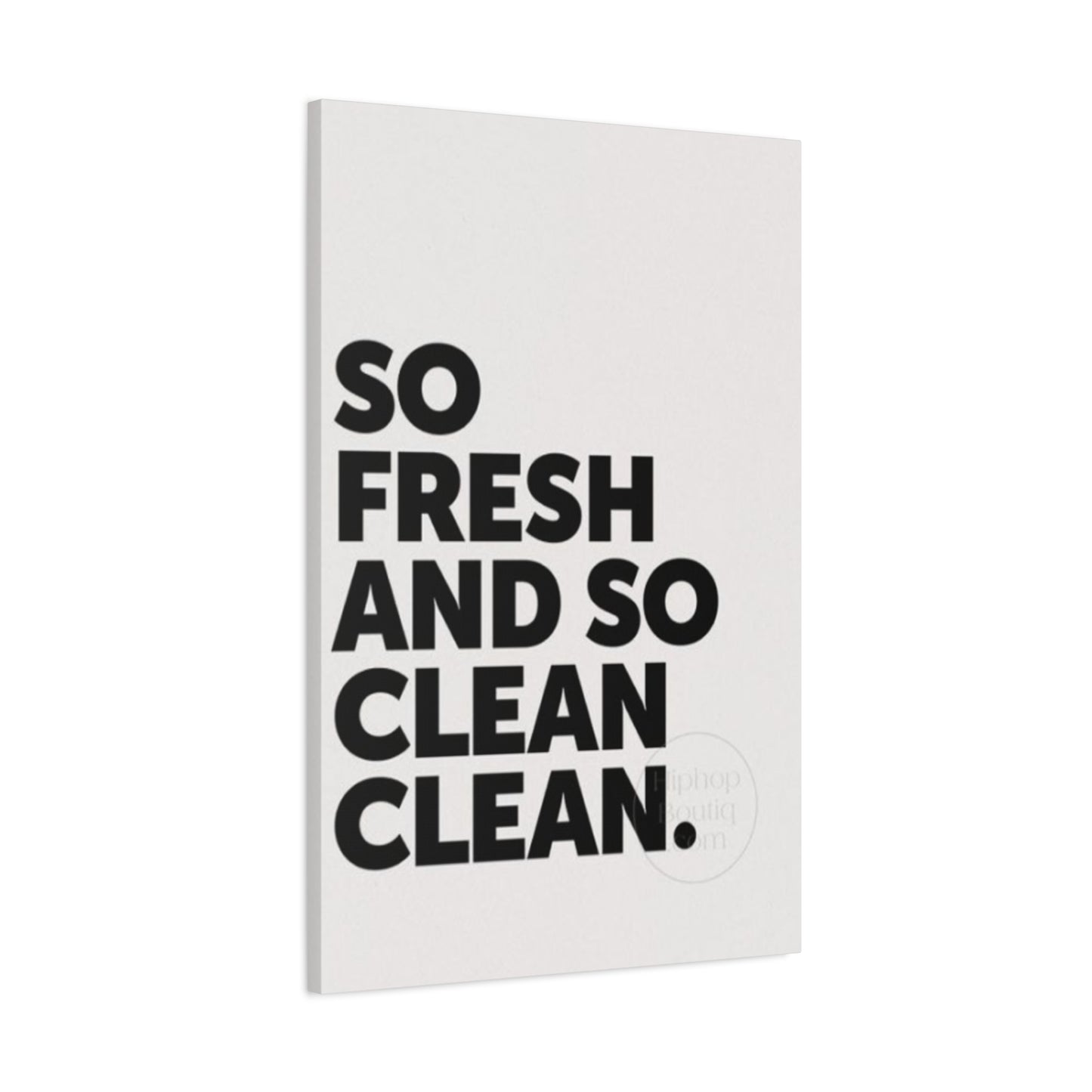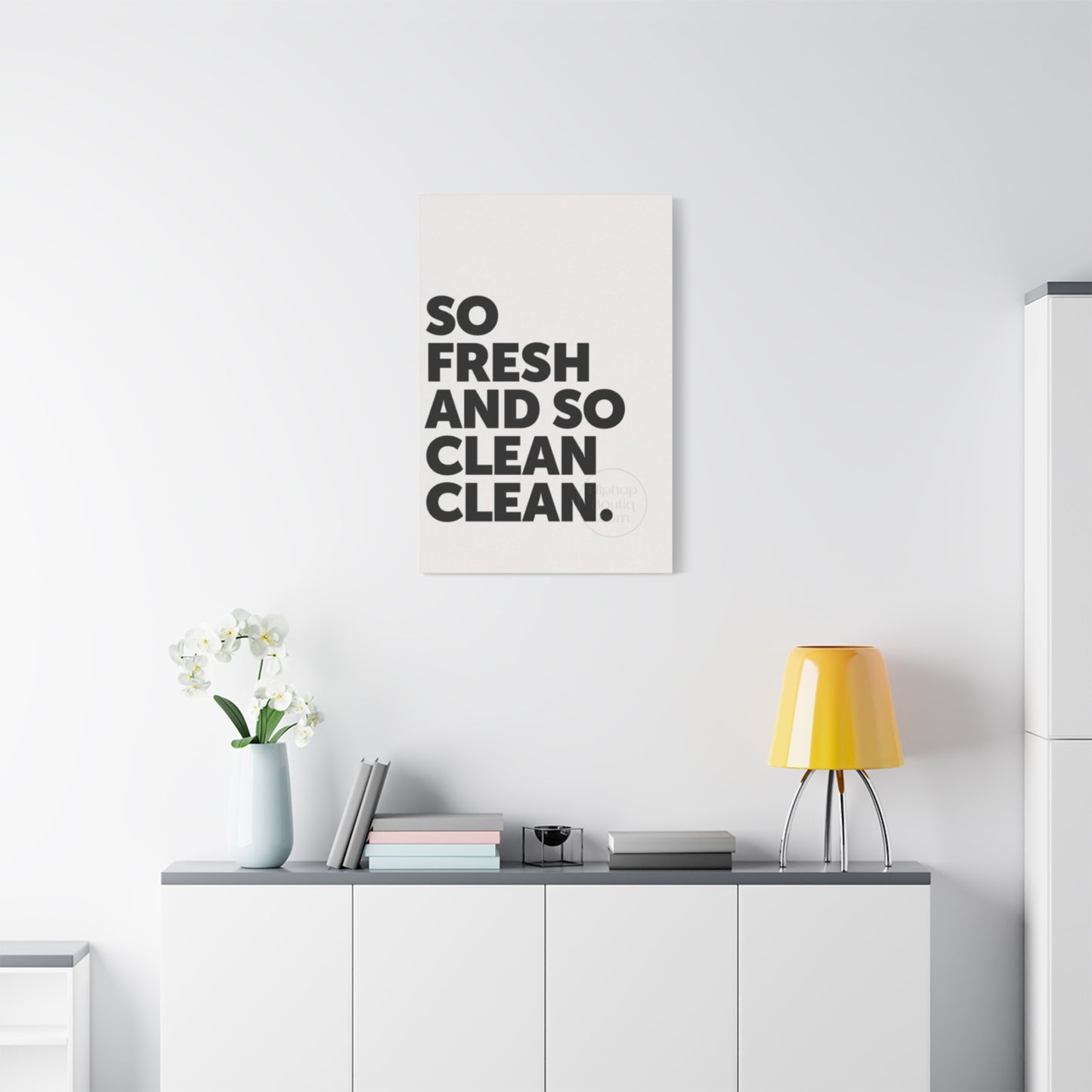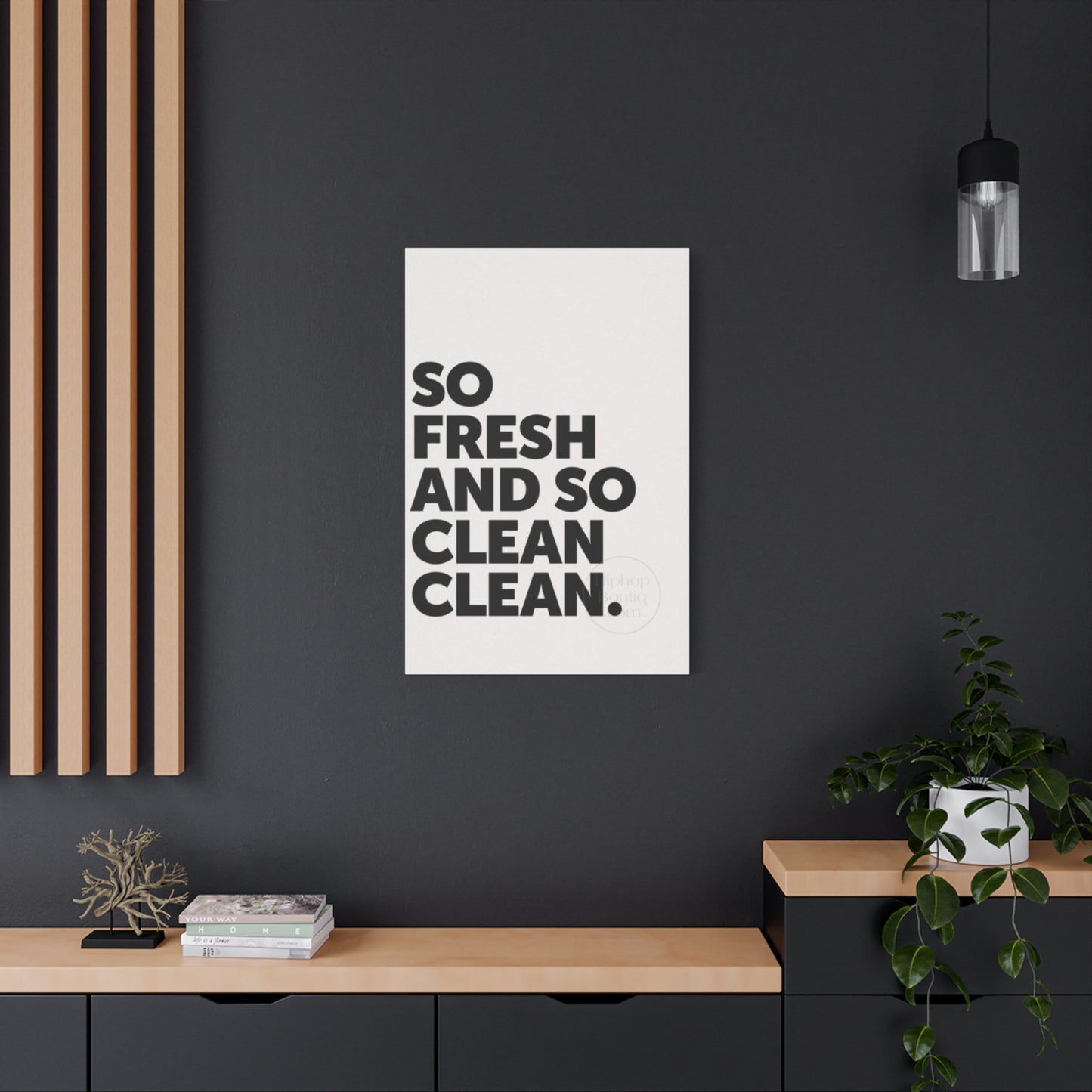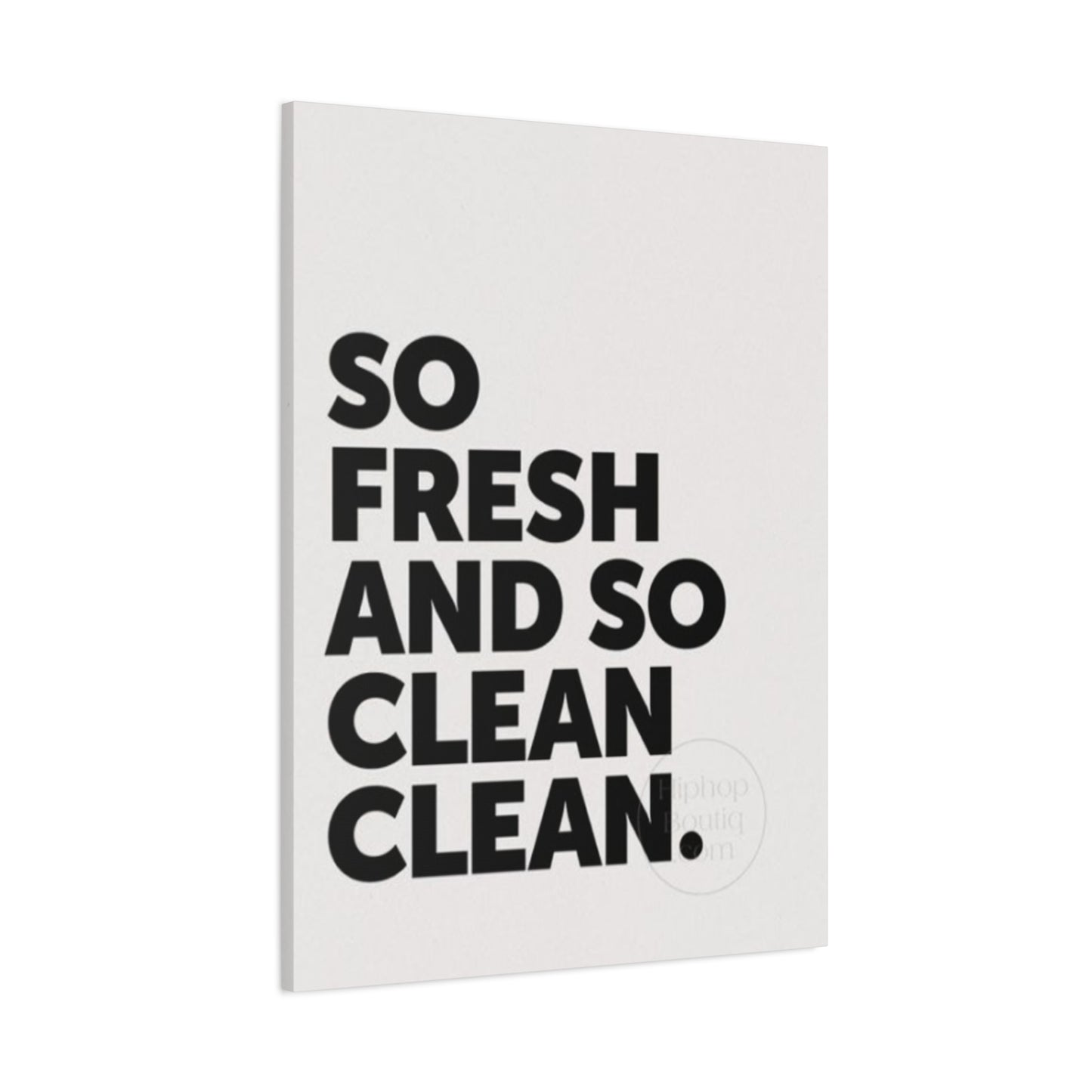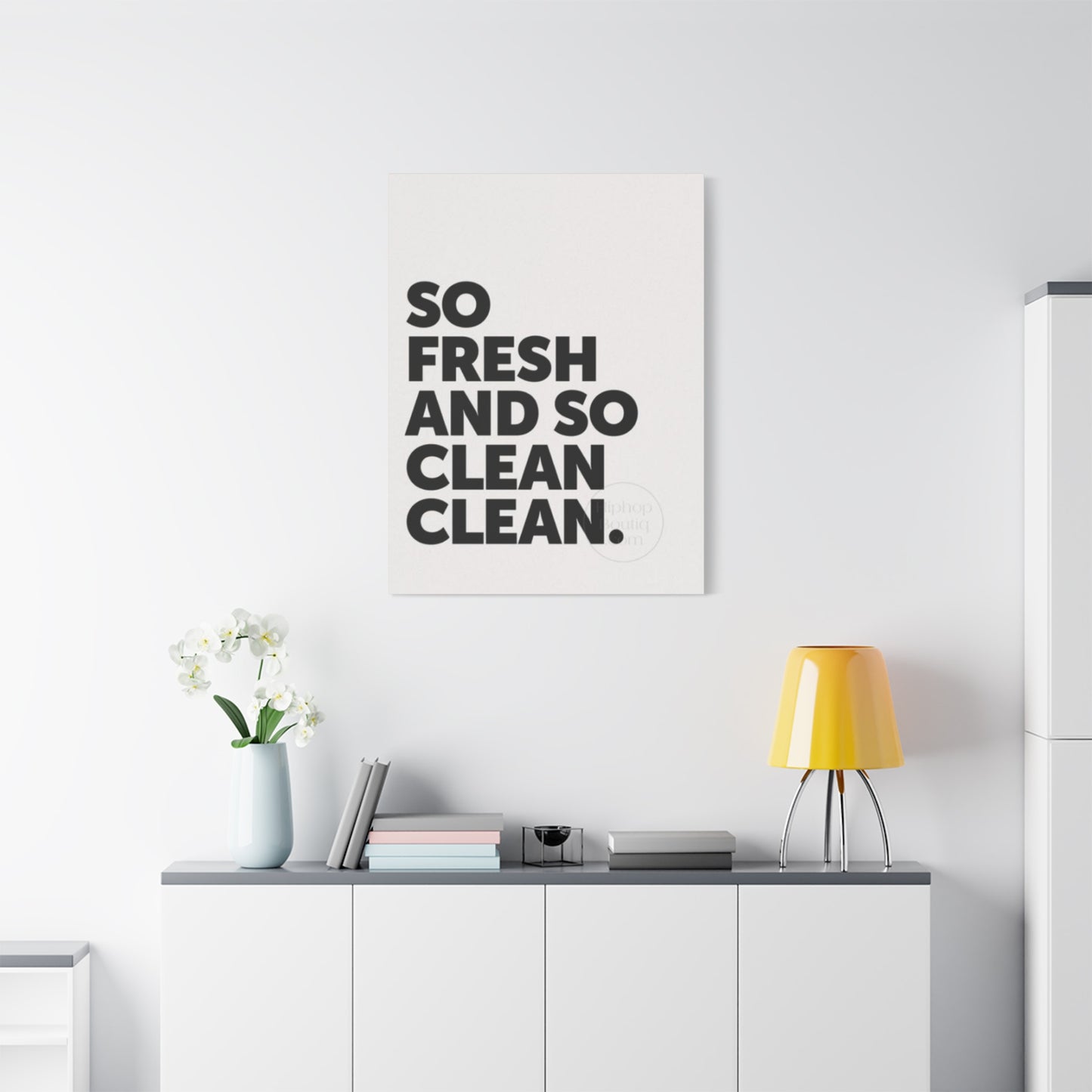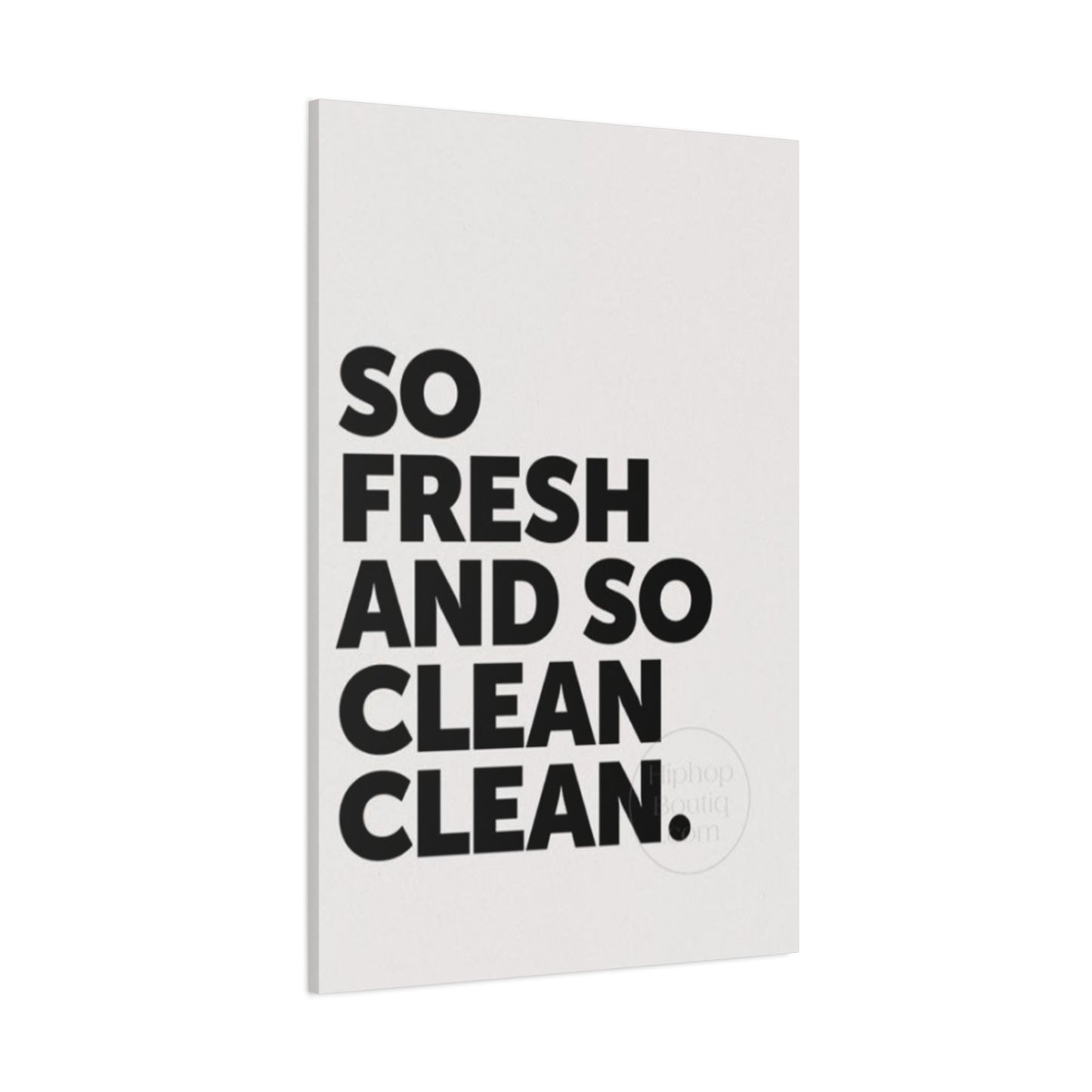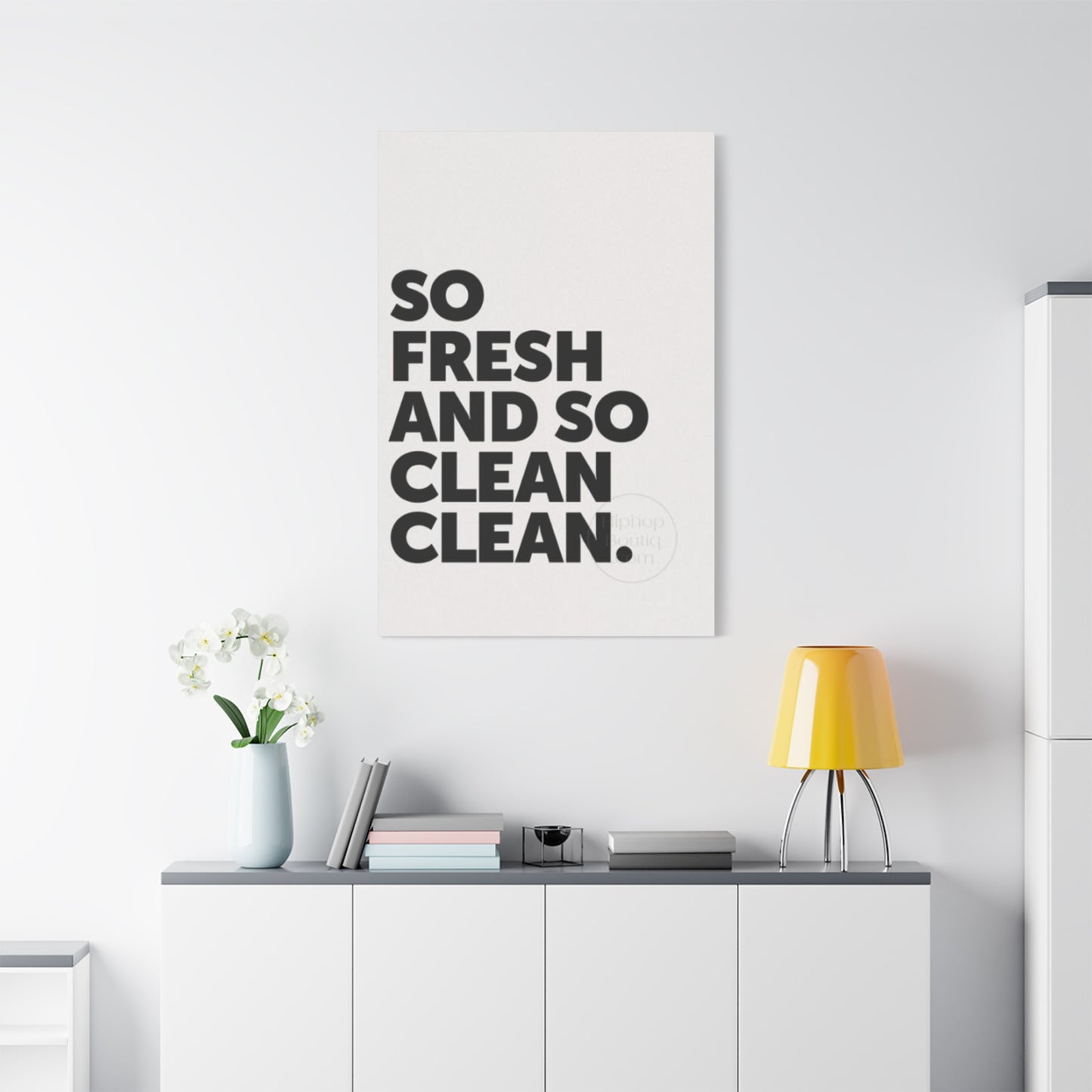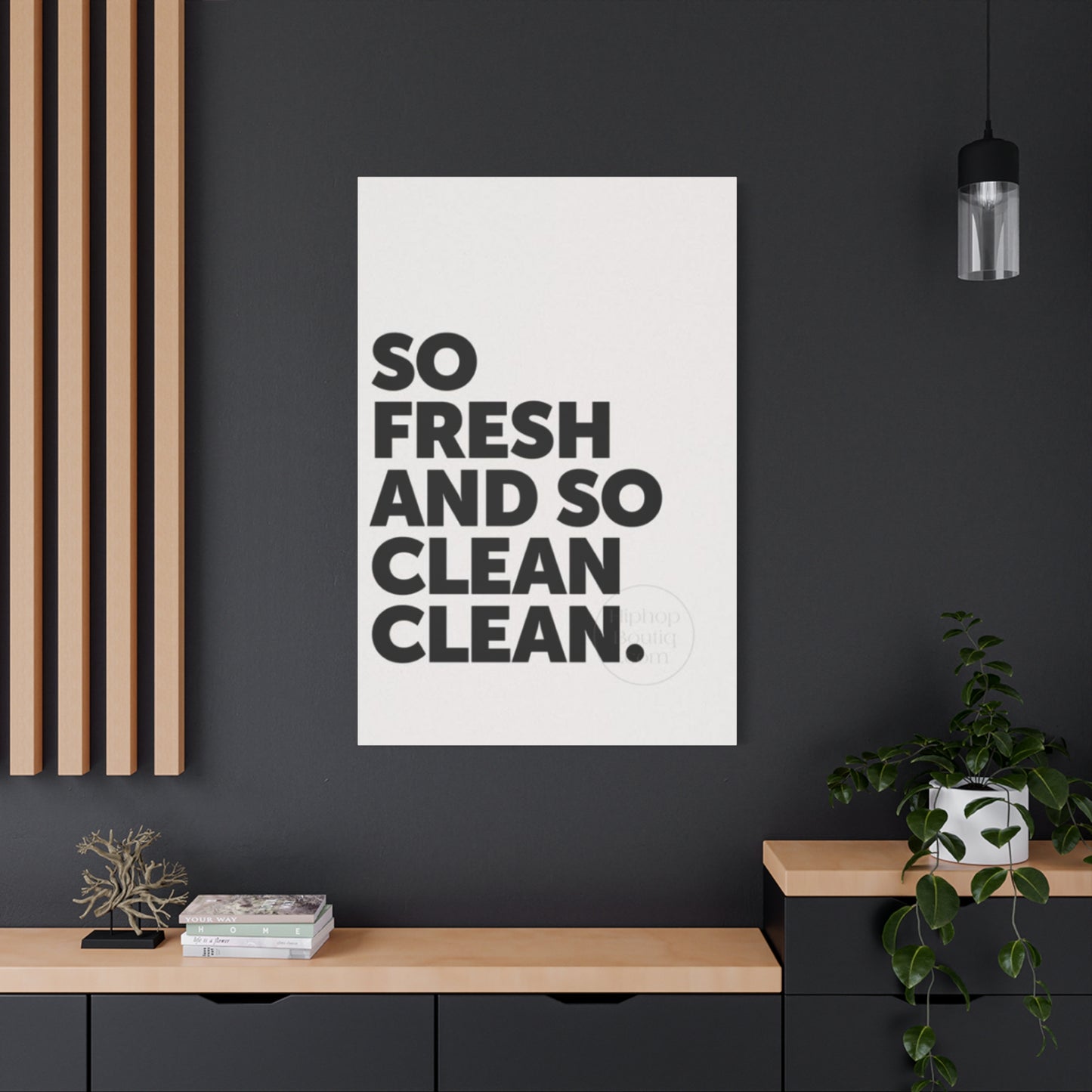Creative Laundry Wall Art Ideas for Every Home Style
Creating an inviting atmosphere in your laundry area begins with thoughtfully chosen poster decorations that celebrate cleanliness and organization. Clean laundry poster decor serves as both functional reminders and aesthetic enhancements, transforming mundane washing areas into delightful environments. These decorative elements can feature motivational messages about cleanliness, charming illustrations of soap bubbles, or artistic representations of fresh linens swaying in the breeze.
When selecting clean laundry posters, consider designs that incorporate soft pastels or crisp whites to emphasize the theme of freshness. Typography-based posters with phrases like "Fresh & Clean," "Wash, Dry, Fold," or "Laundry Day Made Beautiful" add personality while maintaining the clean aesthetic. Vintage-inspired soap advertisements reproduced as posters can bring nostalgic charm to modern washing areas, creating conversation pieces that guests will admire.
The placement of these posters requires careful consideration of moisture levels and ventilation in your laundry area. Opt for high-quality prints with protective coatings or frames with proper sealing to prevent damage from humidity. Consider creating a gallery arrangement with multiple smaller posters rather than relying on a single large piece, which allows for more dynamic visual interest and easier replacement if needed.
Material selection plays a crucial role in the longevity of clean laundry poster decor. Canvas prints offer durability and resistance to moisture, while metal prints provide a modern aesthetic with excellent moisture resistance. Paper prints should be professionally framed with moisture barriers to ensure they maintain their appearance over time. Consider laminated options for high-humidity environments, though these may sacrifice some visual appeal for practicality.
Color coordination between your posters and existing laundry area elements creates a cohesive look that feels intentional rather than haphazard. If your washing machine and dryer are white, consider posters with colorful accents that complement your chosen color scheme. For stainless steel appliances, black and white posters or those with metallic accents can create sophisticated harmony.
Laundry Room Art Inspiration Sources
Drawing inspiration for your laundry room artwork requires exploring diverse sources that range from traditional domestic themes to contemporary artistic expressions. Laundry room art inspiration can come from vintage advertisements that celebrated household cleanliness, botanical prints featuring plants known for their fresh scents, or abstract compositions that evoke the movement and energy of washing cycles.
Historical laundry practices provide rich inspiration for artistic themes. Consider artwork depicting clotheslines against blue skies, washerwomen by rivers, or vintage washing implements transformed into decorative elements. These historical references can add depth and storytelling to your laundry area while maintaining relevance to the room's function.
Nature-inspired artwork brings freshness and vitality to laundry areas. Images of dewdrops on morning grass, ocean waves suggesting the cleansing power of water, or fields of lavender known for their fresh fragrance can create a serene and inspiring environment. These natural elements can make the mundane task of laundry feel more connected to the refreshing aspects of nature.
Contemporary art movements offer modern interpretations of cleanliness and renewal themes. Minimalist compositions with clean lines and simple forms can complement modern appliances, while pop art interpretations of household items can add playful energy to the room. Abstract expressionist pieces that use flowing lines and dynamic movement can echo the motion of washing machines and create visual rhythm.
Personal photography can serve as unique inspiration for custom laundry room art. Images of family linens drying in sunlight, close-up shots of soap bubbles, or artistic captures of water droplets can be transformed into meaningful artwork that personalizes your laundry area. This approach ensures your art is completely unique while maintaining thematic relevance.
Cultural traditions around laundry and cleanliness offer additional inspiration sources. Japanese concepts of cleanliness and organization, Scandinavian approaches to functional beauty, or Mediterranean traditions of sun-drying linens can all inform artistic choices that bring global perspective to your domestic environment.
Minimalist Laundry Wall Posters Design
Embracing minimalist design principles in laundry wall posters creates clean, uncluttered visual environments that enhance rather than overwhelm the functional aspects of the room. Minimalist laundry wall posters focus on essential elements, using restrained color palettes, simple typography, and meaningful negative areas to create impact through subtlety rather than complexity.
The foundation of minimalist poster design lies in the strategic use of white or neutral backgrounds that allow key elements to emerge with clarity and purpose. Single-word messages like "Clean," "Fresh," or "Pure" rendered in elegant typography can convey powerful meanings without visual noise. The choice of typeface becomes crucial in minimalist design, with sans-serif fonts often providing the clean lines that complement minimalist aesthetics.
Geometric shapes and forms provide structure within minimalist laundry posters while maintaining simplicity. Simple circles suggesting bubbles, clean horizontal lines evoking folded linens, or gentle curves reminiscent of flowing water can add visual interest without compromising the minimalist philosophy. These elements should be used sparingly and with careful attention to proportional relationships.
Color selection in minimalist laundry posters typically involves monochromatic schemes or very limited palettes. Black and white combinations provide timeless appeal, while single accent colors like soft blue or sage green can add warmth without overwhelming the design. The key is restraint, allowing each color choice to carry significant visual weight through its scarcity rather than abundance.
Scale and proportion become especially important in minimalist poster design. Large areas of negative space allow the few chosen elements to breathe and maintain their impact. This approach requires confidence in design decisions, as there are fewer elements to rely upon for visual interest. Every line, shape, and word must serve a clear purpose within the composition.
The mounting and framing of minimalist posters should reflect the same design philosophy. Simple, clean frames that don't compete with the artwork maintain the minimalist aesthetic. Consider floating mounts or frameless presentations for the most contemporary look, though these options require careful consideration of humidity protection in laundry environments.
Bright Laundry Room Wall Art Concepts
Incorporating bright laundry room wall art can transform utilitarian washing areas into energetic, cheerful environments that make household tasks more enjoyable. Bright colors have psychological benefits, creating positive associations with cleanliness and renewal while combating the sometimes dreary nature of laundry responsibilities.
Color psychology plays a significant role in selecting bright artwork for laundry areas. Yellow artwork can evoke sunshine and optimism, making folding clothes feel less burdensome. Orange tones bring energy and enthusiasm to the room, while bright blues can suggest cleanliness and freshness. Green artwork connects to natural cleanliness and growth, creating positive associations with renewal and rejuvenation.
Floral artwork provides natural opportunities for bright color incorporation. Sunflower prints bring cheerful yellow tones, while tropical flowers can introduce vibrant oranges, pinks, and purples. Botanical prints of herbs like mint or basil combine bright greens with functional associations, as these plants are often used in natural cleaning products.
Abstract bright artwork allows for bold color combinations without specific representational constraints. Watercolor-style prints with flowing bright colors can suggest the movement of water while adding visual dynamism to the room. Geometric patterns in bright colors can create energetic focal points that complement modern appliances and fixtures.
The intensity and saturation of bright colors require careful balance to avoid overwhelming the room. Consider varying the scale of bright elements, using some large statements pieces balanced with smaller bright accents. This approach prevents color fatigue while maintaining the energetic atmosphere that bright artwork provides.
Seasonal rotation of bright artwork can keep laundry areas feeling fresh and current. Spring pastels, summer brights, autumn warm tones, and winter jewel colors can reflect changing seasons while maintaining year-round visual interest. This approach also allows for budget-conscious updates without permanent commitments to specific color schemes.
DIY Laundry Posters Creation Methods
Creating custom DIY laundry posters offers unlimited personalization opportunities while providing cost-effective solutions for decorating washing areas. The process of making your own artwork can be rewarding and ensures that your decorative elements perfectly match your aesthetic preferences and functional needs.
Digital design tools provide accessible platforms for creating professional-looking laundry posters. Free software like GIMP or Canva offers templates and design elements specifically suited to poster creation. These platforms allow experimentation with different fonts, colors, and layouts without material costs, enabling multiple iterations before final printing decisions.
Typography-focused DIY posters can be created using meaningful phrases related to laundry and cleanliness. "Wash Away Worries," "Clean Slate," or "Fresh Beginnings" can be rendered in attractive fonts and combined with simple graphic elements. Hand-lettering adds personal touches that reflect individual creativity and style preferences.
Photographic DIY posters can incorporate personal images related to cleanliness and freshness. Close-up shots of soap bubbles, artistic captures of hanging laundry, or macro photography of fabric textures can create unique artwork that reflects personal aesthetic sensibilities. These images can be enhanced with text overlays or graphic elements using design software.
Printmaking techniques offer hands-on approaches to DIY poster creation. Simple screen printing can produce multiple copies of custom designs, while block printing can create unique textures and artistic effects. These traditional techniques add handmade character that distinguishes DIY posters from commercial alternatives.
Mixed media approaches combine various materials and techniques for unique results. Combining photography with hand-drawn elements, digital design with traditional painting, or collage techniques with typography can produce one-of-a-kind posters that reflect complex creative visions.
Material considerations for DIY posters include paper selection, ink quality, and protective treatments. High-quality cardstock or poster paper provides durability, while archival inks ensure color longevity. Protective sprays or lamination can extend the life of DIY posters in humid laundry environments, though these treatments may alter the appearance of certain materials.
Laundry Wall Art for Small Rooms
Maximizing visual impact in small laundry areas requires strategic artwork selection that enhances rather than overwhelms limited square footage. Laundry wall art for small rooms must balance decorative appeal with practical space constraints while creating the illusion of larger, more open environments.
Vertical emphasis in small laundry areas can create the illusion of height and openness. Tall, narrow posters or vertically arranged gallery groupings draw the eye upward, making ceilings appear higher and rooms feel more spacious. This approach is particularly effective in narrow laundry closets or compact utility areas.
Light colors and reflective elements in small room artwork can enhance natural and artificial light, making areas feel brighter and more open. White or light-colored backgrounds in posters reflect available light, while metallic accents can create sparkle and visual depth. Mirrors integrated into artwork arrangements can multiply light and create the illusion of expanded dimensions.
Scale considerations become crucial in small laundry areas. Large-scale artwork can actually make small rooms feel larger by creating focal points that draw attention away from space limitations. However, the artwork must be proportionate to avoid overwhelming the area. One statement piece often works better than multiple smaller elements in truly compact environments.
Multi-functional artwork serves dual purposes in small laundry areas. Magnetic poster frames can hold artwork while providing magnetic surfaces for laundry-related notes or small metal items. Chalkboard or dry-erase poster surfaces can display decorative designs while serving as functional message areas for household communications.
Corner utilization maximizes wall area usage in small laundry rooms. Corner-mounted triangular artwork or L-shaped poster arrangements can transform often-ignored corner areas into decorative focal points while preserving valuable straight wall areas for functional elements like shelving or storage.
Storage integration with artwork creates efficient small room solutions. Artwork mounted on hinged frames can conceal small storage areas, while poster-style labels for storage containers combine functional organization with decorative appeal. This approach ensures every element serves multiple purposes in space-constrained environments.
Colorful Laundry Room Prints Selection
Selecting colorful laundry room prints requires balancing vibrant visual appeal with functional considerations specific to washing and cleaning environments. Colorful prints can energize mundane household tasks while creating cheerful atmospheres that make necessary chores more pleasant and engaging.
Color theory principles guide effective colorful print selection for laundry areas. Complementary color schemes create dynamic visual tension that energizes the room, while analogous color schemes provide harmony and tranquility. Triadic color schemes offer vibrant variety without chaos, making them suitable for rooms where both energy and organization are desired.
Seasonal color considerations allow for rotating collections of colorful prints that keep laundry areas feeling fresh and current. Spring pastels can emphasize renewal and freshness, summer brights can bring energy and enthusiasm, autumn warm colors can create cozy comfort, and winter cool tones can suggest cleanliness and clarity.
Pattern integration with colorful prints adds visual texture and interest to laundry areas. Stripes can create linear movement that complements the rectangular forms of appliances, while polka dots can echo soap bubbles and add playful energy. Floral patterns bring natural beauty, while geometric patterns provide modern sophistication.
Cultural color associations can inform print selections that resonate with personal heritage or aesthetic preferences. Mediterranean blues and whites suggest freshness and cleanliness, while Scandinavian color palettes emphasize functional beauty. Asian-inspired color combinations can bring harmony and balance to laundry environments.
Durability considerations for colorful prints include fade resistance and moisture protection. UV-resistant inks maintain color vibrancy over time, while protective coatings prevent moisture damage. Consider the location of colorful prints relative to windows, steam sources, and ventilation to ensure longevity of bright colors.
Coordination with existing elements ensures colorful prints enhance rather than compete with appliances, storage, and architectural features. Neutral appliances provide flexible backdrops for bold colorful prints, while colored appliances may require more careful color coordination to avoid visual conflicts.
Fresh and Clean Laundry Posters Themes
Fresh and clean laundry posters embrace themes that celebrate the renewal, purification, and satisfaction associated with clean linens and organized laundry areas. These thematic approaches create positive associations with household tasks while reinforcing the primary functions of washing and cleaning.
Water imagery provides natural thematic foundation for fresh and clean poster designs. Ocean waves, morning dewdrops, raindrops on leaves, or flowing streams can suggest the cleansing power of water while adding visual movement and natural beauty to laundry areas. These images can be realistic photographs or artistic interpretations that capture the essence of water's purifying qualities.
Botanical themes connect cleanliness with natural freshness. Lavender fields suggest the fragrant freshness of clean linens, mint leaves evoke natural cleaning properties, and eucalyptus branches bring spa-like tranquility to utilitarian environments. These natural elements can be presented as photography, botanical illustrations, or stylized artistic representations.
Textile themes celebrate the materials and processes central to laundry functions. Artistic representations of woven fabrics, close-up photography of cotton fibers, or abstract interpretations of fabric movement during washing cycles can create thematically relevant artwork that honors the craft and materials involved in textile care.
Cleanliness symbols and imagery provide direct thematic connections to laundry functions. Soap bubbles, pristine white linens, sparkling surfaces, or steam rising from fresh laundry can create obvious but artistically rendered connections between artwork and room function. These symbols can be combined with text or presented as pure visual elements.
Renewal and transformation themes emphasize the positive aspects of laundry processes. Before and after imagery, metamorphosis concepts, or seasonal renewal themes can frame laundry tasks as positive transformation processes rather than mundane chores. This thematic approach can make laundry rooms feel more purposeful and satisfying.
Aromatherapy and sensory themes bring multi-sensory associations to visual artwork. Images that suggest fresh scents, soft textures, or gentle sounds can create artwork that engages imagination beyond purely visual appeal. These themes can make laundry areas feel more spa-like and indulgent rather than purely utilitarian.
Laundry Art for Modern Homes Integration
Integrating laundry art into modern homes requires understanding contemporary design principles that emphasize clean lines, functional beauty, and seamless integration between form and function. Modern laundry art should complement architectural features, technological elements, and lifestyle approaches that characterize contemporary living.
Contemporary color palettes in modern homes typically favor neutral foundations with strategic color accents. Laundry art should reflect these preferences through sophisticated color choices that complement rather than compete with modern appliances and fixtures. Grays, whites, and blacks provide versatile foundations, while single bright accents can add personality without overwhelming modern aesthetics.
Technology integration considerations affect modern laundry art selection. Smart appliances with digital displays require artwork that complements rather than competes with electronic interfaces. Consider artwork with digital or tech-inspired themes that celebrate the intersection of traditional domestic tasks with modern innovation.
Architectural harmony ensures laundry art enhances rather than conflicts with modern home design elements. Clean lines in artwork should parallel architectural features, while scale and proportion should reflect the mathematical precision often found in modern construction. Open floor plans may require artwork that coordinates with multiple visible areas beyond just the laundry room.
Material selections for modern laundry art often favor contemporary options like acrylic, metal, or glass over traditional paper or canvas. These materials complement modern appliances and fixtures while offering superior durability in utility environments. The sleek appearance of modern materials can enhance the technological sophistication of contemporary laundry areas.
Lighting integration becomes crucial in modern homes with sophisticated lighting systems. Artwork should be selected with consideration for both natural and artificial lighting conditions, including dimming capabilities and color temperature variations. Some modern laundry art incorporates LED elements or reflective materials that interact with lighting systems.
Minimalist principles guide modern laundry art selection toward pieces that maximize impact through restraint rather than abundance. Single statement pieces often work better than complex arrangements, while negative areas become as important as decorative elements. This approach ensures artwork enhances rather than clutters modern environments.
Laundry Quotes on Wall Art Applications
Incorporating meaningful quotes into laundry wall art transforms functional environments into inspirational experiences that elevate mundane household tasks into opportunities for reflection and motivation. Laundry quotes can range from humorous observations about domestic life to profound insights about renewal, cleanliness, and personal transformation.
Motivational laundry quotes can reframe household tasks as positive activities worthy of appreciation and attention. Phrases like "Clean Home, Clear Mind," "Fresh Start Every Day," or "Washing Away Yesterday's Worries" can create positive mental associations with laundry responsibilities. These quotes work particularly well when rendered in attractive typography that complements the overall aesthetic of the laundry area.
Humorous laundry quotes can add levity and personality to utilitarian environments. "Laundry Today or Naked Tomorrow," "Wash, Rinse, Repeat Life," or "Sorting Life One Load at a Time" can bring smiles to daily routines while acknowledging the sometimes overwhelming nature of household responsibilities. Humor can make necessary tasks feel less burdensome and more manageable.
Philosophical quotes about cleanliness, renewal, and transformation can add depth and meaning to laundry environments. Quotes from literature, poetry, or spiritual traditions that address themes of purification, renewal, or fresh beginnings can create contemplative atmospheres that encourage mindfulness during routine tasks.
Typography considerations for quote-based artwork require careful attention to readability, aesthetic appeal, and thematic appropriateness. Font selections should reflect the mood and message of the quote while remaining legible from typical viewing distances. Serif fonts can add traditional elegance, while sans-serif options provide modern cleanliness that matches laundry themes.
Cultural and literary sources provide rich collections of quotes suitable for laundry art applications. Proverbs from various cultures often contain wisdom about cleanliness and order, while literary works may include beautiful passages about renewal and transformation. These sources can provide sophisticated content that elevates laundry areas beyond purely functional considerations.
Personalization opportunities allow for custom quotes that reflect individual family values, inside jokes, or meaningful personal philosophies. Children's sayings about cleanliness, family mottos, or personally meaningful phrases can create unique artwork that no other home will duplicate while maintaining thematic relevance to laundry functions.
Laundry Poster Framing Tips and Techniques
Professional framing techniques can transform simple laundry posters into sophisticated artwork that enhances any washing area while protecting valuable prints from moisture and environmental damage. Proper framing extends the life of artwork while elevating its visual impact and perceived value.
Moisture protection represents the primary concern when framing artwork for laundry environments. High humidity levels, steam from washing machines, and potential water exposure require protective measures that go beyond standard framing practices. Moisture barriers, sealed frames, and appropriate backing materials become essential for artwork longevity.
Material selection for laundry poster frames should prioritize durability and moisture resistance. Metal frames, particularly aluminum or stainless steel options, provide superior moisture resistance compared to wood frames that may warp or develop mold in humid conditions. Plastic frames offer budget-friendly moisture protection, though they may lack the aesthetic appeal of metal or wood alternatives.
Glass versus acrylic glazing decisions affect both protection and appearance of framed laundry posters. Glass provides superior optical clarity and scratch resistance but can break if subjected to impact. Acrylic glazing offers impact resistance and lighter weight but may scratch more easily and can develop static that attracts dust in laundry environments.
UV protection becomes important for artwork displayed near windows or under strong artificial lighting. UV-filtering glazing prevents color fading and paper degradation that can occur over time. This protection is particularly important for colorful posters or photographs that may be more susceptible to UV damage than black and white artwork.
Matting considerations can enhance the visual appeal of framed laundry posters while providing additional protection from moisture and contact with glazing. Acid-free matting materials prevent chemical damage to artwork over time, while appropriate mat colors can complement both the artwork and the surrounding environment.
Hanging systems for laundry environments should account for potential vibration from appliances and humidity effects on wall materials. Secure mounting hardware prevents artwork from shifting or falling during appliance operation, while appropriate wall anchors ensure long-term stability even if wall materials expand and contract with humidity changes.
Laundry Room Wall Art Trends Analysis
Current laundry room wall art trends reflect broader cultural movements toward mindful living, sustainable practices, and the elevation of domestic tasks from mundane chores to meaningful lifestyle components. Understanding these trends helps inform artwork selections that feel current and forward-thinking rather than dated or irrelevant.
Sustainability themes increasingly appear in laundry room artwork as environmental consciousness grows among homeowners. Artwork celebrating natural cleaning methods, reducing water consumption, or embracing slow living principles reflects cultural shifts toward more responsible domestic practices. These themes can include botanical prints of plants used in natural cleaning, artwork promoting air-drying over machine drying, or designs celebrating minimal consumption lifestyles.
Wellness integration represents another significant trend in laundry room design and artwork selection. Artwork that promotes mindfulness, self-care, and mental health awareness transforms laundry areas into spaces that support overall well-being rather than simply accomplishing household tasks. This trend includes artwork featuring meditation themes, stress-relief messaging, or designs that encourage present-moment awareness during routine activities.
Technology celebration acknowledges the increasing sophistication of modern laundry appliances and smart home integration. Artwork that playfully references smart appliances, celebrates technological innovation, or bridges traditional domestic practices with modern convenience reflects the evolving relationship between technology and household management.
Artisan and handcrafted aesthetics gain popularity as reactions against mass production and digital saturation. Hand-lettered quotes, watercolor paintings, block prints, and other obviously handmade artwork bring human touch and individuality to standardized appliance environments. This trend values imperfection and personal expression over commercial polish.
Global and cultural influences expand laundry room artwork beyond Western domestic traditions. Artwork inspired by Japanese concepts of cleanliness and order, Scandinavian functional beauty, or Mediterranean outdoor drying traditions brings international perspective to local domestic environments while acknowledging diverse approaches to household management.
Maximalist reactions against minimalist trends bring bold colors, complex patterns, and abundant decorative elements to some laundry areas. This counter-trend celebrates abundance, joy, and personal expression through artwork that embraces rather than restrains decorative impulses. Maximalist laundry art might include vibrant gallery walls, mixed patterns, or eclectic collections that reflect diverse interests and aesthetic preferences.
Functional Laundry Decor Ideas Implementation
Combining aesthetic appeal with practical functionality creates laundry decor that serves multiple purposes while enhancing the visual appeal of utilitarian environments. Functional laundry decor ideas maximize the value of decorative elements by ensuring they contribute to organization, efficiency, and daily usability.
Storage integration with decorative elements creates solutions that address common laundry room challenges while maintaining visual appeal. Decorative baskets can hold supplies while adding texture and natural elements to the room. Wall-mounted organizers designed with attractive patterns or colors can store frequently used items while serving as decorative focal points.
Organizational systems can incorporate artistic elements that make practical functions more visually appealing. Color-coded sorting systems can use attractive labels or tags that coordinate with overall room aesthetics. Clothesline displays can serve both functional drying purposes and decorative gallery systems for rotating seasonal artwork or family photos.
Message centers combine communication functions with decorative opportunities. Chalkboard or whiteboard surfaces can display artistic designs when not needed for practical messages. Cork boards can be covered with attractive fabrics that coordinate with room decor while providing surfaces for pinning important household information.
Lighting integration ensures decorative elements are properly illuminated while contributing to overall room functionality. Decorative pendant lights can provide task lighting over folding areas while adding style and personality to utilitarian environments. Under-cabinet lighting can highlight attractive storage solutions while improving functionality for detailed tasks.
Multi-purpose furniture pieces can provide necessary functions while contributing to room aesthetics. Ottoman storage benches offer seating for putting on shoes while hiding seasonal items or cleaning supplies. Rolling carts can organize supplies while serving as mobile work surfaces that can be moved as needed for different tasks.
Plant integration brings life and natural air purification to laundry environments while adding decorative elements that change and grow over time. Plants that thrive in humidity, such as ferns or spider plants, can improve air quality while adding natural beauty that complements themes of cleanliness and renewal.
Laundry Art with Vintage Style Characteristics
Vintage style laundry art captures the charm and nostalgia of earlier domestic eras while bringing historical perspective to contemporary household tasks. This aesthetic approach celebrates traditional craftsmanship, time-tested design principles, and the enduring appeal of well-made household items from previous generations.
Historical advertising provides rich source material for vintage laundry art. Reproduction advertisements for soap, washing machines, and household cleaners from the early to mid-20th century offer authentic period aesthetics with direct thematic relevance to laundry functions. These pieces can be found as original collectibles or high-quality reproductions that capture period charm without antique prices.
Typography from vintage eras brings distinctive character to laundry room artwork. Hand-lettered signs, old-fashioned serif fonts, and decorative lettering styles from various historical periods can add authentic vintage appeal to custom artwork. These typography elements can be combined with modern messaging to create pieces that feel both historical and relevant.
Color palettes from specific vintage periods can guide overall aesthetic choices in vintage-style laundry areas. 1940s pastels, 1950s bright primaries, or 1960s earth tones can create cohesive vintage atmospheres when consistently applied across artwork, accessories, and room elements. Understanding historical color preferences helps create authentic rather than superficial vintage aesthetics.
Vintage household imagery celebrates the tools, techniques, and aesthetics of earlier domestic periods. Artwork featuring old washboards, clotheslines, vintage irons, or traditional soap-making implements can honor historical approaches to household management while adding authentic period details to contemporary environments.
Reproduction techniques can create vintage-style artwork using contemporary methods. Distressing techniques, aging processes, and period-appropriate printing methods can make new artwork appear genuinely vintage while ensuring availability and affordability. These techniques allow for customization while maintaining authentic vintage appeal.
Period-appropriate materials enhance the authenticity of vintage-style laundry art. Canvas, aged papers, wood backgrounds, and metal surfaces can provide authentic foundations for vintage-inspired artwork. The choice of materials significantly affects the perceived authenticity and historical accuracy of vintage-style pieces.
Black & White Laundry Posters Appeal
Black and white laundry posters offer timeless elegance and sophisticated simplicity that complements any decor style while providing striking visual impact through contrast rather than color. This classic approach to artwork ensures longevity and versatility that transcends changing color trends and style preferences.
Contrast manipulation in black and white artwork creates dramatic visual effects that can make simple subjects appear striking and important. High contrast combinations emphasize graphic elements and create bold statements, while subtle tonal variations provide gentle sophistication that enhances rather than overwhelms room aesthetics.
Typography opportunities expand in black and white formats where text becomes a primary design element rather than competing with colorful graphics. Font choices, letter spacing, and compositional arrangements gain increased importance when color is eliminated as a design tool. This limitation often results in stronger, more focused designs that communicate more effectively.
Photographic black and white laundry art can capture textures, patterns, and details that might be lost in color versions. Close-up shots of fabric weaves, soap bubble formations, or water droplet patterns can become striking artwork when rendered in black and white with attention to tonal relationships and compositional strength.
Historical associations with black and white imagery bring classic, timeless qualities to laundry room environments. The aesthetic connects to early photography, vintage advertising, and traditional printmaking techniques that suggest permanence and quality. These associations can make contemporary laundry areas feel more established and sophisticated.
Versatility advantages of black and white artwork ensure compatibility with changing room colors, new appliances, and evolving style preferences. Black and white pieces can anchor design schemes while allowing other elements to change without requiring artwork replacement. This practical advantage makes black and white choices particularly valuable in frequently updated areas.
Artistic techniques specifically suited to black and white media can create unique effects unavailable in color artwork. Pen and ink drawings, charcoal sketches, woodblock prints, and high-contrast photography offer distinctive aesthetics that celebrate the medium's limitations as creative opportunities rather than constraints.
Simple Laundry Room Art Approaches
Simple laundry room art emphasizes clarity, functionality, and understated elegance that enhances rather than overwhelms utilitarian environments. This approach values restraint and purposeful selection over abundance, creating calm, organized visual environments that support the practical functions of laundry areas.
Minimal color palettes in simple laundry art typically employ one or two colors maximum, allowing each color choice to carry significant visual weight and meaning. Monochromatic schemes can create sophisticated unity, while single accent colors can provide gentle interest without visual chaos. The restraint required in simple art often results in stronger, more memorable pieces.
Single-subject focus creates clear, uncomplicated artwork that communicates directly without visual confusion. A single soap bubble, one perfect clothespin, or a solitary clean towel can become compelling subjects when rendered with attention to composition, lighting, and emotional resonance. This approach often proves more effective than complex compositions with multiple competing elements.
Typography-based simple art can convey powerful messages through careful font selection and compositional arrangement. Single words like "Clean," "Fresh," or "Home" can carry significant emotional weight when properly presented. The challenge lies in making simple elements feel intentional rather than sparse or unfinished.
Geometric simplicity employs basic shapes and forms to create visual interest without complexity. Circles, squares, triangles, and lines can be arranged to suggest laundry-related themes while maintaining abstract appeal that doesn't depend on literal representation. This approach can feel both modern and timeless simultaneously.
Natural simplicity draws inspiration from uncomplicated natural forms that relate to cleanliness and renewal themes. Single leaves, simple flowers, or basic water patterns can provide organic interest while maintaining the restraint that defines simple artistic approaches. These natural elements often feel more accessible and less intimidating than complex artistic statements.
Functional simplicity ensures that simple artwork serves practical purposes beyond pure decoration. Simple designs can incorporate organizational elements, provide visual cues for laundry processes, or offer gentle reminders about household tasks while maintaining aesthetic appeal through thoughtful design and execution.
Fresh-Themed Laundry Prints Development
Fresh-themed laundry prints celebrate the renewal, cleanliness, and vitality associated with clean linens and well-maintained household environments. These thematic approaches can transform routine household tasks into celebrations of freshness and renewal that make necessary chores feel more meaningful and satisfying.
Seasonal freshness themes can rotate throughout the year to maintain visual interest and seasonal appropriateness. Spring themes might emphasize new growth, rain, and blooming flowers that suggest renewal and fresh beginnings. Summer themes could focus on sunshine, outdoor drying, and the energy of warm weather cleaning. Autumn themes might celebrate harvest freshness and preparation for cozy indoor seasons, while winter themes could emphasize cleanliness and organization during indoor-focused months.
Botanical freshness incorporates plants and natural elements known for their fresh scents or cleaning properties. Lavender prints suggest the fragrant freshness of scented linens, while mint imagery evokes natural cleaning power and crisp scents. Eucalyptus, lemon, and other naturally aromatic plants can provide both visual interest and thematic relevance to fresh-themed laundry areas.
Water themes naturally connect to freshness concepts through associations with cleansing, renewal, and purity. Ocean waves, flowing streams, morning dew, or gentle rain can all suggest the cleansing power of water while adding movement and natural beauty to laundry environments. These water themes can be realistic or abstract, depending on overall aesthetic preferences.
Textile freshness celebrates the materials and processes that create fresh, clean linens. Artwork featuring cotton fields, linen plants, or artistic representations of clean fabrics can honor the agricultural and manufacturing processes that create the textiles we clean and maintain. This approach can add depth and appreciation for the complete lifecycle of household textiles.
Air and wind themes suggest the natural freshness achieved through air-drying and ventilation. Artwork depicting clotheslines in breezes, flowing curtains, or abstract representations of air movement can celebrate natural drying methods while adding visual movement and energy to static laundry environments.
Aromatherapy themes connect visual freshness with imagined scents and sensory experiences. Artwork that suggests fresh scents through visual cues can create multi-sensory experiences that engage imagination and memory in addition to pure visual appeal. These themes can make laundry areas feel more spa-like and luxurious rather than purely utilitarian.
Conclusion
Laundry rooms are often overlooked when it comes to home décor, yet they present a unique opportunity to infuse creativity, personality, and charm into a space that serves a functional role in everyday life. Whether your home style is modern, rustic, farmhouse, boho, industrial, or traditional, the right wall art can transform your laundry room from a purely utilitarian space into one that inspires and delights.
From playful typography and vintage signs to nature-inspired prints and custom family laundry rules, the possibilities for laundry wall art are as diverse as your personal taste. Minimalist spaces benefit from clean lines and monochrome art, while more eclectic homes can embrace bold colors, mixed media pieces, and quirky, humorous quotes that bring a smile to anyone folding a load of clothes. Incorporating baskets, hangers, or repurposed items like old washboards or ironing boards as art also adds texture and depth, making the space feel more thoughtful and styled.
If you're working with a small or compact laundry area, wall art becomes even more important in making the space feel inviting. Vertical arrangements, narrow framed prints, or decals can all be used strategically to add visual interest without cluttering. For larger or open laundry rooms, consider creating a gallery wall or using oversized art pieces to establish a clear design theme that ties in with the rest of your home.
Personalization is key in making laundry wall art feel intentional. Custom signs with your family name, framed photos, or DIY projects with personal touches can elevate your laundry room into a true reflection of your household. And for those who rent or want something temporary, peel-and-stick art options offer flexibility without sacrificing style.
Ultimately, creative laundry wall art does more than just beautify — it changes the way you experience the space. By incorporating thoughtful art into your laundry room, you transform mundane routines into moments of visual joy. It encourages organization, motivates productivity, and adds a sense of pride to an often-forgotten corner of the home.
No matter your budget or design expertise, there are countless ways to enhance your laundry space with art that speaks to your style. All it takes is a bit of creativity, inspiration, and a willingness to treat every room — no matter how small or practical — as a canvas for self-expression.

















